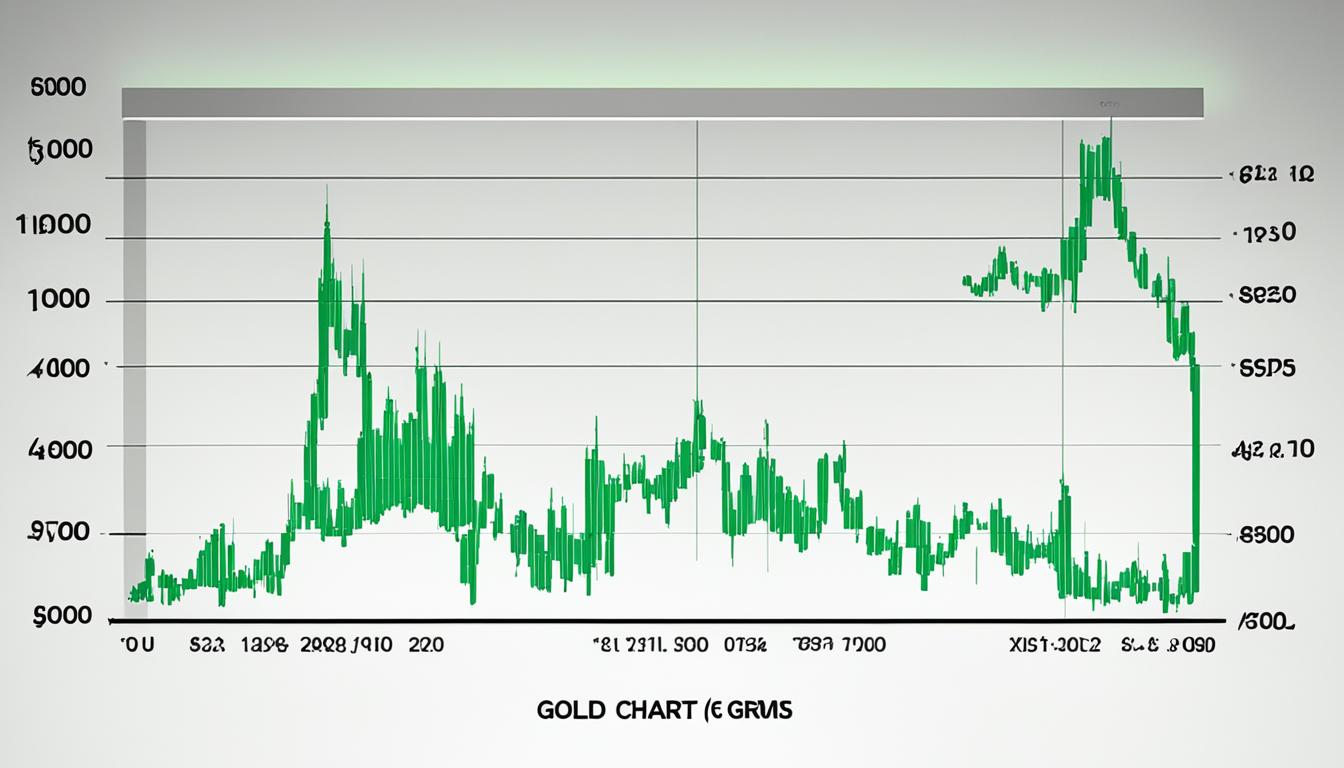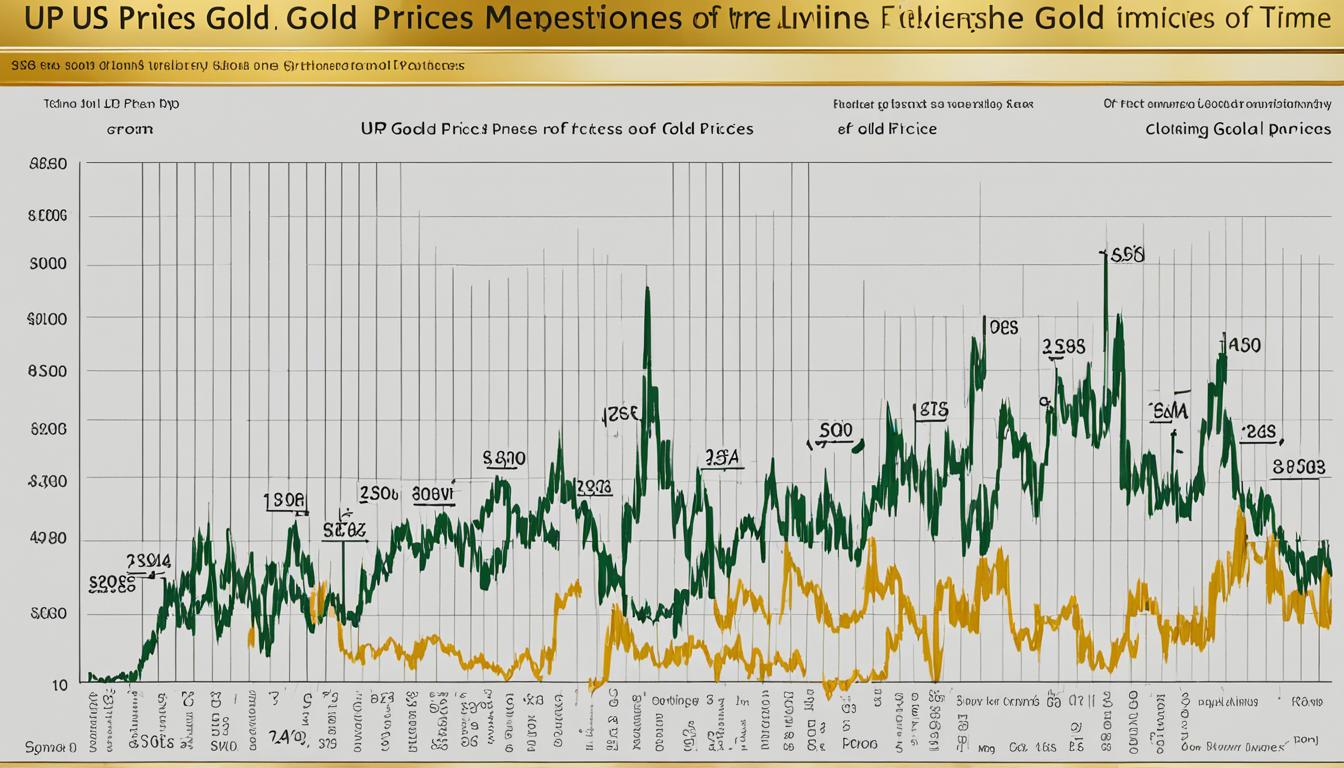The current gold price for 1 gram shows how our global economy changes. People interested in investment understand the need to keep up with the 1 gram of gold price. This price reflects both personal wealth potential and the state of financial markets. Knowing the gold price accurately helps make informed decisions.
Understanding these important metrics involves using reliable sources. Platforms such as BullionVault and Zyla Labs provide updates in real time, helping you stay connected to the gold market’s heartbeat. Let’s dive deeper into what determines the current value of this everlasting asset.
Understanding the Gold Market
The gold market is more than just trading. It includes all activities related to buying, selling, and trading gold. Factors like mining and investing influence this market. It mirrors the continual shift in supply and demand, swayed by economic and political events.
Understanding the market’s drivers is crucial for those diving into gold trading. Knowing how to read market trends can lead to success. By keeping up with past prices, current events, and future predictions, investors can make smart moves.
- Comprehensive analysis of market reports and trends.
- Regular monitoring of economic indicators impacting gold prices.
- We are staying informed about global events that could shift investor sentiment in the gold market.
In dealing with gold, whether it’s physical gold bullion or digital forms like futures, staying informed is key. In the worldwide gold market, having the right knowledge means making profit.
Factors Influencing the Price of Gold
The value of gold is affected by many forces. These gold price factors help investors predict price changes.
Central Bank Monetary Policies
Central bank policies greatly affect gold prices. Interest rate changes or large-scale actions can push gold prices up or down. This leads investors to make moves based on these actions.
Global Economic Indicators
Economic indicators like inflation, GDP growth, and jobs impact gold. They show the health of the economy. This affects how people feel about investing in gold.
Demand in Jewelry and Technology
Gold’s popularity in jewelry and tech affects its demand. Changes in how much people buy can shift gold’s demand. This can change gold prices.
- Technology advancements increase gold’s use in electronics, influencing its price.
- Cultural and economic factors sway jewelry demand, especially where gold is culturally significant.
How Much 1 Gram of Gold Costs in Various Currencies
The gold price in different currencies mirrors a nation’s economic state. Knowing the 1 gram of gold price in USD, EUR, GBP, CAD, and AUD is crucial for investors. This knowledge helps understand economic health and aids in smart investment choices. Changes in currency value impact gold prices, showing a global picture of wealth and opportunity.
Looking at the 1 gram of gold price in EUR and GBP might shed light on Europe’s economics. Meanwhile, prices in CAD or AUD indicate changes in economies reliant on commodities. This information, along with gold price tracking tools, helps investors make the most of their metal investments.
- Gold price in USD – The international standard for gold pricing
- Gold price in EUR – Shows changes in European markets
- Gold price in GBP – Ties to the UK’s economic health
- Gold price in CAD – Provides a view of Canada’s gold market
- Gold price in AUD – Tracks Australia’s role in gold trading
Using websites that show the gold price in different currencies is vital. It lets you quickly see the 1 gram of gold price in CAD or AUD, like checking the weather. This way, investors can react fast to market changes and get the best deal for their gold.
The charm of the 1 gram of gold price in GBP or the steady gold value in USD is critical in global trade. Understanding currency-specific gold prices helps one navigate the complex world of precious metals.
Real-Time Gold Price Tracking Tools
Investors looking to build their strategies can’t ignore the importance of real-time gold price trackers. These tools provide a live gold price chart. This chart is your gateway to understanding gold trading’s ever-changing nature.

It’s critical to stay up-to-date with gold price changes. Thanks to technology, you can easily find these tools online. They’re available on trusted websites, detailed financial platforms, and easy-to-use mobile apps.
- Customizable live gold price charts enable investors to view trends at a glance.
- Historical data repositories offer a backdrop to current valuations, providing context and perspective.
- Alert systems inform traders of significant price shifts, ensuring no critical movement goes unnoticed.
Leaders in this field, like BullionVault and Zyla Labs, offer gold price trackers that are both accurate and timely. They help investors make informed decisions with confidence.
Getting a top-notch gold price tracker is a smart move for anyone in the gold market. In this fast-moving market, every second is valuable. Having the latest info can greatly impact your investment results.
Investment Strategies for Gold Buyers
If you’re looking to strengthen your investment mix, mastering how to buy and handle gold is key. Knowing the market and different gold investment strategies is essential for triumph here.
Gauging Market Sentiment
The gold market’s vibe comes from market sentiment analysis. Investors who get this can win big. To do well, you must watch investment flows, worldwide events, and big economic data closely. Knowing this helps foresee gold price changes.
Long-Term vs Short-Term Investment
It’s vital to think about the time frame of your gold investment. Long-term investment and short-term investment in gold have their own traits and benefits.
- Long-term gold investing often involves keeping physical gold or gold securities. It’s about the asset’s lasting value and its power to protect against inflation.
- On the flip side, short-term investing uses gold’s price changes. It’s for those wanting to quickly profit by using trading and options strategies.
Whether you’re after stability or quick profits, picking the right gold investment strategy is crucial. It impacts your financial success greatly.
Diversification Benefits of Gold in a Portfolio
Gold is a timeless asset with unique qualities important for portfolio management. Its gold diversification benefits are key to a strong investment strategy. Adding gold to a portfolio is a smart move for risk mitigation.
Gold’s value and historical prestige make it a solid choice for protecting investments from market ups and downs. Putting gold in your asset mix adds balance and security. This helps keep your portfolio steady when other investments may not.
Risk Management with Gold
In risk mitigation, gold protects against market volatility and inflation. It acts as a steadying force during financial ups and downs. Investors find comfort in gold’s steady value, especially when other investments fluctuate.
Gold’s Correlation with Other Assets
Asset correlation shows gold often moves differently than stocks and bonds. This lack of correlation makes it a good diversifying tool. It can reduce risk and help stabilize a portfolio during market lows.
Gold offers more than shine; it provides security for wise investors. Its strong performance in various portfolios shows its value in financial planning and portfolio management.
Gold as a Safe-Haven Asset During Turbulent Times
Throughout history, gold has been revered as a safe-haven for investors worldwide, especially in uncertain economic times. Like a beacon of stability in the stormy sea of market variables, gold stands out. It maintains its value when other assets might not. As we navigate today’s unpredictable economy, knowing why gold is a preferred choice helps investors seek financial safety.
- Gold remains valuable, even when inflation is high.
- When stock markets fall, gold often keeps its value, offering reassurance.
- As paper money loses value, gold’s worth becomes even clearer, offering a hedge against money problems.
Indeed, gold as a safe-haven is a story many investors believe in, especially when the future is unclear. With its long history and ability to withstand financial downturns, gold is a top pick for avoiding economic trouble.
- Time and again, gold has shown it’s a safe place for money during crises.
- Gold is tangible and limited, unlike digital or paper assets, making it less risky.
- Adding gold to a portfolio is like buying financial insurance. It’s not just a strategy; it’s essential.
In conclusion, gold’s benefits during tough times are vast. Its role as a store of value in the face of economic uncertainty cannot be denied. This inherent quality keeps drawing smart investors. They want to protect their wealth against unpredictable economic changes.
A Historical Perspective on Gold Prices
Looking into gold price history tells us more than just changing prices. It also shows important gold price milestones and stories that impacted our economy. By seeing how gold has done over time, we get valuable lessons. These can help us make smarter choices in the future.
Milestones in Gold Pricing History
Gold has had key moments throughout history that left a big mark. These include the Gold Standard era and the Nixon Shock. These events mirror big changes in the economy. For example, stopping the gold standard in the 1970s let gold’s price move freely. This led to big ups and downs and new chances.

Gold’s Performance Over the Decades
Looking at gold over the years shows it often keeps its value well, especially during tough times. The gold boom in the 1980s, the rise in the early 2000s, and the high point in 2011 show this. Each time, global issues or inflation made gold’s value shoot up.
- The 1980s: Gold hit record prices due to high inflation.
- Early 2000s: Gold prices went up because of economic worries.
- 2011: Prices reached a peak as people turned to gold after a financial crisis.
This pattern shows gold’s strength and how it helps protect wealth through the years.
Physical Gold vs Gold Securities: What to Choose?
Choosing between physical gold and gold securities is crucial for investors. Each offers unique benefits suited to different investment goals. Whether it’s holding physical gold or investing in its value through the market, knowing the details is key.
Gold Bars and Coins
Some investors prefer holding physical gold. Gold bars and gold coins give a sense of real, touchable value. They’re seen as reliable investments. But remember, storing and insuring them adds extra costs. Also, selling physical gold quickly can be harder than selling gold securities.
Gold ETFs and Mutual Funds
Gold ETFs and gold mutual funds appeal to those wanting easier trades. These options let investors get into the gold market without the hassle of physical gold. They’re easy to trade like stocks and can be bought or sold fast. Yet, they come with fees and you won’t own the metal itself.
Gold Mining and Processing Company Stocks
- Offers potential for leveraged gains relative to the price of gold.
- Investment in gold stocks requires assessment of company performance and market conditions.
- Gold stocks can provide a dividend, unlike physical gold.
Gold mining and processing company stocks are appealing for risk-takers who enjoy research. These stocks can outperform gold itself. But, picking individual companies means dealing with specific risks. Unlike physical gold or gold funds, these risks are unique to each company.
Whether you go for physical gold or gold securities, match your choice to your investment goals and risk comfort. Think about the sure value of gold bars and gold coins, or the quick trade of gold ETFs and gold mutual funds. Or, consider the growth opportunity in gold stocks. Each option has its pros and cons, and what’s best varies by individual.
Understanding Taxes and Fees in Gold Trading
Jumping into gold trading means facing various costs. Knowing these expenses helps manage investments smartly and see real profit chances. The costs connected to gold trading can change the net returns of your gold investments greatly.
Costs of Buying and Selling Gold
Here’s what you need to know when buying gold:
- Dealer’s spreads, which show the buy and sell price difference.
- Commissions or brokerage fees, which are service charges.
- Storage fees to keep physical gold safe.
- Shipping and insurance costs for physical gold delivery.
Also, selling gold fees may include some of these expenses. This is especially true for physical gold needing safe transport. So, it’s vital to factor in these costs when planning your investment strategy.
Tax Implications for Gold Investors
Tax on gold investment can vary. It often depends on where you live and the kind of gold assets you have. For example, owning physical gold versus gold securities can have different tax results. Here are essential aspects to think about:
- Capital gains taxes on profits from selling gold.
- Sales taxes or value-added tax (VAT) in certain places.
- Total taxes or benefits might differ based on investment types, like ETFs or trusts.
- How long you hold it can influence the tax rate.
Gold investing involves dealing with many rules. Getting advice from tax experts or financial advisors is wise. They can help you understand your gold investments’ tax duties.
Future Outlook: Predicting Gold Prices
Predicting the gold price is not simple. It involves studying many factors that have complex interactions. The future of gold prices grabs the attention of both investors and analysts. They look at current trends and past data to guess where things might go. As the market outlook changes, it’s vital for market players to keep up through careful study and thinking.
- Experts often analyze long-term economic trends to gauge potential shifts in gold demand.
- Central bank policies are closely observed for any changes that could affect inflation and the value of gold.
- The stability of geopolitical events is another critical factor, as uncertainty can lead to increased investment in gold.
- Finally, market sentiment and investor behavior are assessed to predict possible reactionary trends in gold prices.
Making guesses on future gold prices is complex. It strikes a balance between analyzing numbers and understanding the global economy’s health.
- Market research reports and historical price trends outline the movement in gold prices over time.
- Economic indicators, such as inflation, GDP growth, and employment rates, provide a backdrop for demand expectations.
- Geopolitical events that can instigate market volatility necessitate a vigilant eye on international relations.
- Investor sentiment, often a precursor to market movement, must be monitored through financial news and investor forums.
Even with thorough research, the future of gold prices is full of unknowns. So, investors should be careful with any gold price prediction. Understand that the market outlook for gold is always a bit of a guess. It should be just one piece of a broad investment plan.
Conclusion
When we talk about investing in gold, we see many factors play a part. These include what central banks do and global economic trends. Understanding gold prices means monitoring market changes and using sound sources and tools. This helps investors stay informed and make intelligent moves.
Investing in gold has many sides to consider. Savvy investors look at both physical gold and gold shares. They also think carefully about their goals and what they prefer. Taxes and fees are part of investing in gold, too. They affect how much money you make and can’t be ignored.
Trying to guess where gold prices will go is tough. It’s full of unknowns. But, learning as much as you can about the market is key. This knowledge helps you move wisely in the world of gold investing. It’s important to stay updated on market trends to do well. Ultimately, being careful yet bold could be the secret to success in gold investing.




